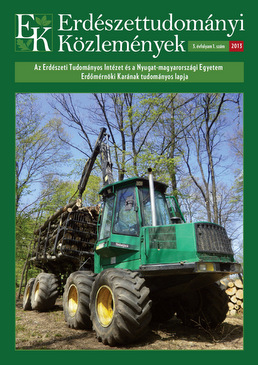Determining gap size with the aid of hemispherical photography
Tamás Kollár
Correspondence
Correspondence: Kollár Tamás
Postal address: H-9600 Sárvár, Várkerület utca 30/a.
e-mail: kollart[at]erti.hu
Abstract
One of the greatest challenge of the continuous cover forest management is to choose a suitable gap size in a given forest stand that will help the regeneration of economically significant woody species, but possibly control the competitors of the cutting site and undesired woody species, hereby reduce the necessity of nursing. The hemispherical photos (or fish-eye photos) taken of the gaps in the survey are about to reveal, that how little information is obtained from a simply measured gap size when determining the light conditions of a gap. From the findings, it can be suggested to forest researchers who are working with the transformation system that they take simple fish-eye photos alongside the estimation of ground level gap size, from which accurate canopy closure and real light conditions can be evaluated.
Keywords: hemispherical photography, gap, canopy openness, selection system, transformation system, continuous cover
Open Acces
For non-commercial purposes, let others distribute and copy the article, and include in a collective work, as long as they cite the author(s) and the journal, and provided they do not alter or modify the article.
Cite this article as:
Kollár, T. (2013): Determining gap size with the aid of hemispherical photography. Bulletin of Forestry Science, 3(1): 71-78. (in Hungarian)
Volume 3, Issue 1
Pages: 71-78
First published:
28 June 2013
Related content
3
More articles
by this authors
6
Related content in the Bulletin of Forestry Science*
More articles by this authors in the Bulletin of Forestry Science
* Automatically generated recommendations based on the occurrence of keywords given by authors in the titles and abstracts of other articles. For more detailed search please use the manual search.
